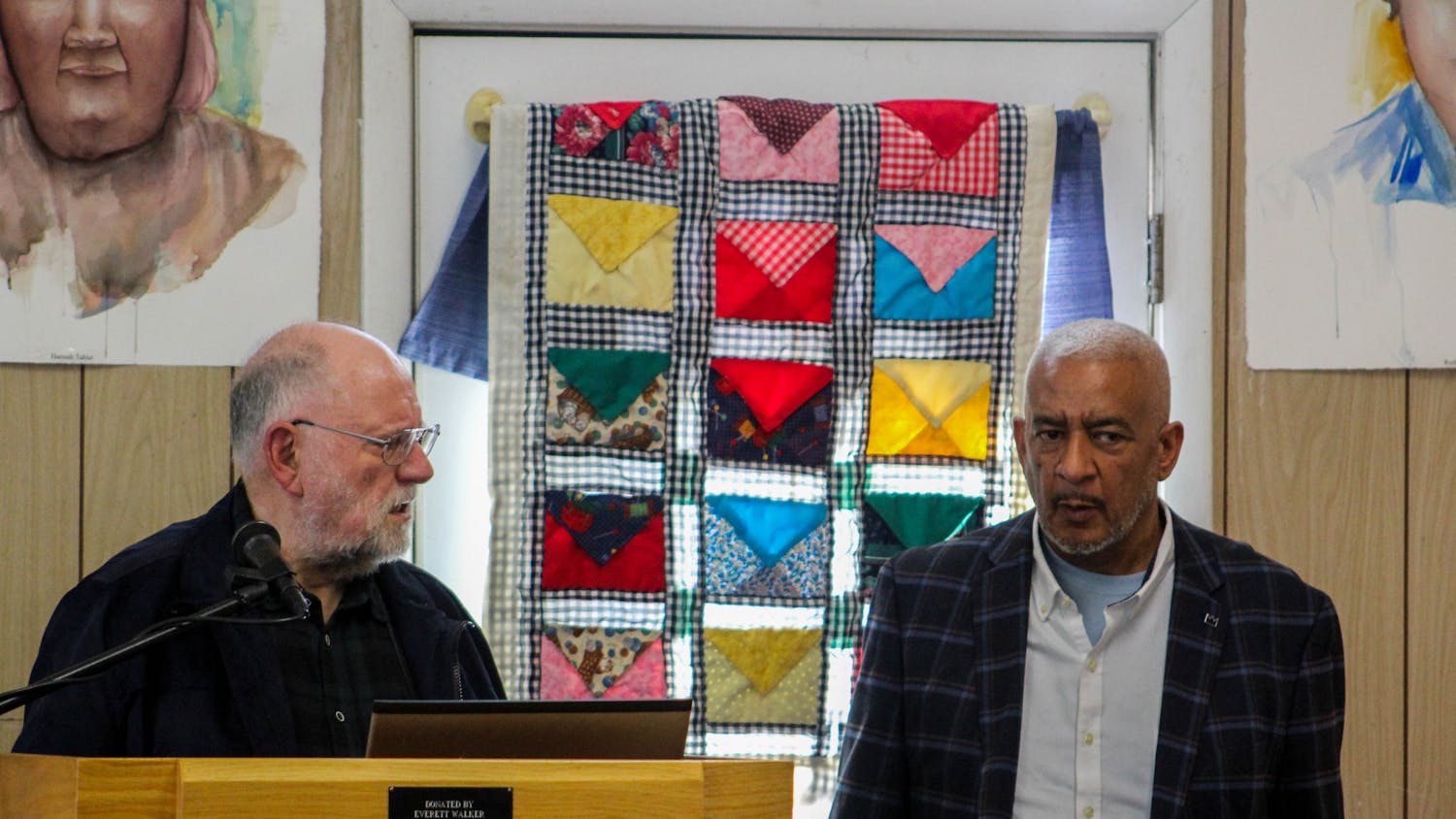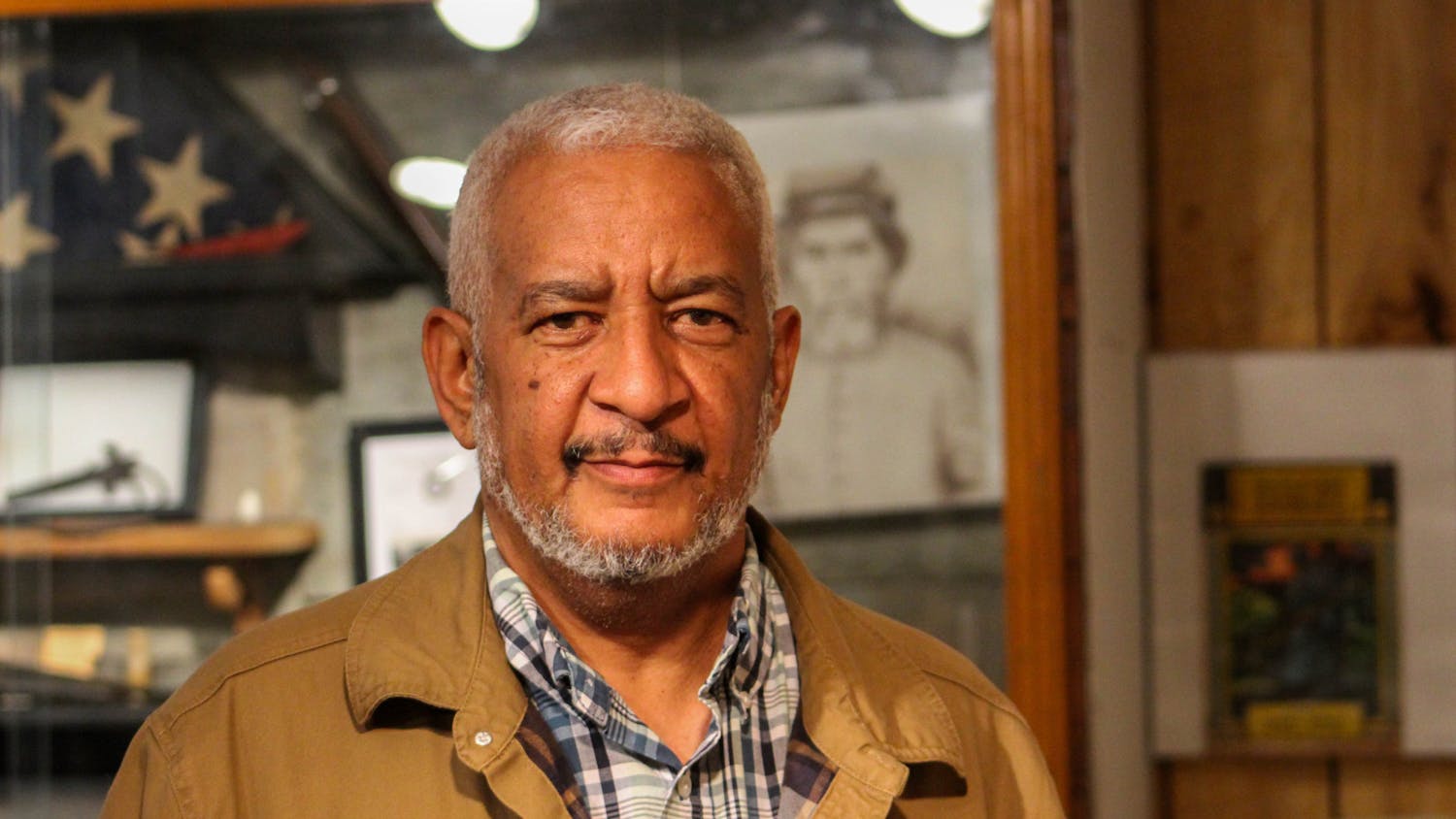Last Friday, the small, humble site of The Tablertown People of Color Museum, located at 9035 State Route 329, was packed full of Tablertown and David Butcher enthusiasts alike. One particular person present was the guest of honor and the reason for the gathering: John Carey.
Carey is the Director of the Governor’s Office of Appalachia and has been serving in that position since 2019. Butcher, a historian, genealogist and curator of the museum, first met Carey during the Appalachia Heritage Luncheon this past December.
Butcher was recognized for his work of preserving history at the December event, and he invited Carey to come down to see his work for himself. To Butcher’s surprise and delight, Carey made good on his word and came down a mere two months later. This visit marked an important milestone for Butcher’s work and helped educate Carey on this pocket of Black Appalachia.
The museum currently resides in a renovated pole barn on Butcher’s property, but the board of the organization was able to purchase a property in Tablertown with the purpose to construct the museum there.
Not only is the collection the museum holds a triumph in terms of historical artifacts, it also serves the unique purpose of preserving the history of a community that has been somewhat forgotten over time.

David Butcher, left, tells John Carey, right, about the abundance of historical artifacts and photos that are featured in the Tablertown People of Color Museum during their tour on Friday, Feb. 17, 2023.
Tabertown, now known as Kilvert, was founded by Michael Tabler, Butcher’s eighth-great-grandfather. The founding of the community is unique because Tabler, an heir to a plantation that was then in Virginia – now West Virginia – moved to that part of southeast Ohio in order to emancipate his six-biracial children he fathered with an enslaved woman, Hannah.
The concept of emancipating one’s slave children was practically unheard of during the time, according to Butcher. Tabler and his children started a town that was always referred to as Tablertown by its residents but was officially named Kilvert after Sam Kilvert legally named the town after himself many decades later.
Part of the museum’s efforts includes getting the name of the town changed back to Tablertown, with Butcher creating a petition that now has over 300 signatures. Butcher said the changing of the name is more for recognition than anything else because all the residents in the town have Stewart addresses, therefore the change would not affect them.
Among those present at the event was Erin Rennich, a senior executive coach and strategic advisor with the Social Enterprise Ecosystem. The Social Enterprise Ecosystem, or SEE, is a program supported by Ohio University’s Voinovich School of Leadership and Public Affairs. Rennich essentially provides support and business advisory services to mission-based entities.
Among those mission-based entities are the Tablertown People of Color Museum. Rennich said she has been working with Butcher and the museum since July 2021. Rennich and the Voinovich School have helped Butcher with applying for grants as well as becoming a nonprofit.
“David has been engaging in the community with this work for the last 17 years, but he had been doing so without any financial assistance and no form of entity,” Rennich said. “Becoming a non-profit enabled him to apply for grants.”
Rennich said these grants have been instrumental for Butcher and his causes, explaining they were able to purchase key items that could help Butcher to continue to do his work as long as possible. One of those items is a split HVAC system that is nestled in the upper corner of the museum. While it seems simple, the system ensures the structure has temperature control, preserving all the artifacts in it for much longer.
Rennich is passionate about Butcher’s work, which is part of a bigger mission to create a stronger economy in Tablertown. The hope is that the construction of the museum will create more options for employment in the town, something the community has not experienced in nearly 80 years.
“David’s big hope and dream is to build a permanent home for the museum … and to bring jobs to Kilvert,” she said. “They will be the first jobs in Kilvert since the 1940s, and so we’re hoping this will act as a hub for tourist attractions and cultural attractions.”
Butcher and the museum have hosted an array of community events that attract more people to the town, including hosting his distant cousin from Germany – the first time a Tabler from Germany had set foot on American soil in nearly 290 years.
“David himself is a cultural asset,” Rennich said. “He is just a natural storyteller, and he’s so passionate about what he does because of its relevance and its importance in educating the future generations.”

John Carey, left, shakes hands with David Butcher, right, outside the Tablertown People of Color Museum. Butcher gave Carey a tour of the museum as part of an application for a potential grant that would give the museum more funding.
Also in attendance was Brian Koscho, an MFA graduate in communication media arts, who has also contributed to getting traction and visibility for Butcher’s mission. He is also the creator of Invisible Ground, a history and storytelling podcast that focuses on Southeast Ohio. Koscho created a video about Butcher a year ago which started the friendship between the pair.
Similar to Rennich, Koscho is passionate about Butcher’s efforts and wants to help to push for visibility in any way he can.
“To me, it really is the story of America … the good, the bad, the amazing perseverance,” he said. “The work that he’s doing not just (as) a family member who’s telling that story, but just as a historian and archivist is incredible.”
Butcher was extremely gracious Carey made the drive to educate himself about this pocket of Black history that exists in Appalachia.
“I’m really thankful for you to come because I can talk about this in a lot of different places, but until you come here and put your feet on the ground, it takes that for you to understand what’s going on here,” Butcher said, addressing Carey.
Carey showed great interest throughout the tour, asking thoughtful questions that Butcher was more than happy to answer.
“That’s great,” he said in regard to the museum’s mission of educating the masses. “I think it’s a great opportunity.”
Butcher said he is excited to see what the future holds for the museum and the town, and thanked Carey profusely for visiting.
“We really need to build a world-class museum because we do have a world-class story,” Butcher said.






